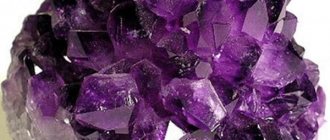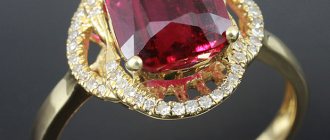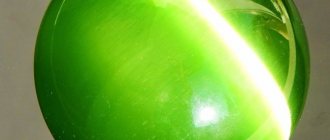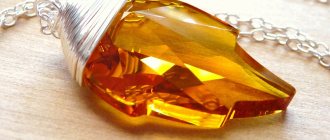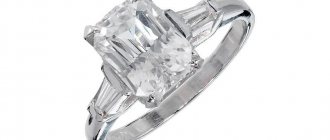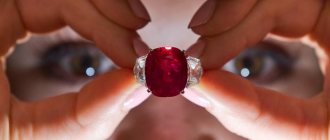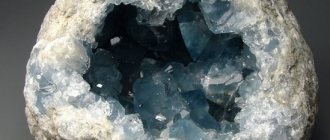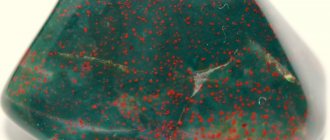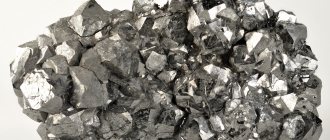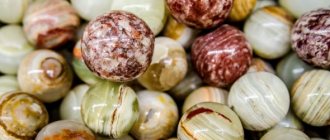Alexandrite is still a very young gemstone, because it was discovered only in the nineteenth century.
Natural stone is a rare mineral and is therefore highly valued all over the world, resulting in a cost of tens of thousands of dollars. A special feature of this stone is its ability to change its color depending on the lighting - pleochroism - from emerald green to bright red. The purer the color produced, the more expensive the alexandrite.
Ural stone is widely used in the production of jewelry that amazes with its beauty and grace. It also finds application in science - quantum mechanics, medicine, cosmetology (synthetic analogues).
History of the Ural gem
Alexandrite was discovered in the Urals in 1934 on the sixteenth birthday of Emperor Alexander II by Finnish geologist N. Nordenschild. Since this was the year the Tsar came of age, the stone was named after him and was presented to the birthday boy by jewelry craftsman Perovsky.
But the first mention of the Peacock Eye nugget was found in the four-thousand-year-old Indian treatise “Mahabharata”.
The mineral was especially popular among noble society in the nineteenth century and was worth fabulous money.
In Russia, since 1980, they began to grow and create artificial synthetic minerals - fakes of natural stone, the cost of which was several times cheaper.
Currently, the bulk of production comes from large fields located in Brazil, Tanzania, Sri Lanka, Africa and Russia (Malyshevskoye field). Ural alexandrites are the most valuable minerals, as they have a bright color and a contrasting transition from one to another.
Domestic mining of alexandrite
The history of the precious mineral in Russia began in 1834, when the first Ural alexandrites were found. These deposits are considered primary. The Ural deposits were developed until the end of the 20th century. The last mines closed in 1995. According to research, there were still crystals in the ground, but so deep that they could not be reached.
The stones found here during this period are distinguished by their pure and contrasting color. After the mines were depleted, the Russian authorities initiated a search for other deposits in order to resume the extraction of alexandrite. However, unfortunately, there were no new deposits of the precious mineral in Russia.
Antique jewelry made from alexandrite, mined in the Urals, is also difficult to find, although they were in demand among the nobility. This is due not only to the fact that the stones were rare, but also to the signs of the miners, which stated that after the discovery of at least one such nugget of emeralds it would not be possible to find them. In the old days, emeralds were valued more than alexandrites, so prospectors stubbornly “did not notice” the iridescent crystals and did not pick them up.
Today, almost all stones mined in the Urals are or become part of gemological collections. And their sale in Russia is a criminal offense.
Types of Alexandrites
In nature you can find the following types of this mineral:
- Tsimofan, popularly called a cat's eye. It is found very rarely. The light effect of this variety is obtained due to the fact that a large number of small inclusions in the mineral are oriented in the same direction. Therefore, under certain lighting conditions, a bright stripe appears in the middle part of the stone, similar to a cat’s eye.
- Ural Alexandrite is the most valuable stone, the color of which changes from green to red.
- In the deposits of India, a variety is mined that changes color from yellow to pink.
Whose gems are better?
- Ural alexandrites are considered the standard. But they practically never reach the international market.
- Brazil. Its alexandrites are distinguished by the best shades of red.
- India. Its gems have the best shades of green and bluish.
- Tanzania and Madagascar give the world the largest crystals.
Natural Alexandrites
Informative: a new deposit was discovered in India several years ago. Indian gems have rich, bright colors, distinct and strong color transitions.
Chemical composition of the Ural gem
The mineral contains mainly chromium (giving green), titanium and iron (red elements). It is the properties of chromium ions and the crystal lattice that cause the stone to change color. Vanadium, which can also influence the transformation of alexandrite, is rarely found among inclusions.
Ural natural stone has the formula BeAI2O4, which is due to the chemical composition of complex beryllium and aluminum tetroxide, and is a type of the mineral chrysoberyl.
Another feature of this mineral is its hardness, which is higher than that of emerald. It is eight and a half units according to the Moss scale.
The density of alexandrite is determined by the plug 3.5-3.8 g/cm3, and the refraction is 1.74-1.76.
How to grow alexandrites
To obtain synthetic alexandrites, low-quality natural stones are used. The crushed raw materials are heated and melted. To obtain the desired color, vanadium and chromium oxides are introduced into the melt.
The synthesis process is carried out in a special container, or crucible. It must withstand high temperatures, so it is made of refractory metals - for example, iridium. This platinum group metal costs 3 times more than gold, which affects the final cost of synthetic alexandrites: they cannot be called cheap, although they are cheaper than their natural counterpart.
During the synthesis process, a seed of sapphire or other stone, mounted on a vertical rod, is placed in the melt. Then it gradually rises, rotating and turning, and “pulls” part of the melt behind it. This hardens to form an alexandrite crystal. The cycle is repeated several times until the melt is exhausted.
Medicinal properties
Traditional healers say that it is worth paying attention to the healing properties of alexandrite:
- stops bleeding;
- it is used to clean the blood;
- used in the treatment of blood vessels and heart;
- has a positive effect on the functioning of the spleen and liver;
- helps with diseases of the pancreas;
- treats alcoholism;
- copes with neurological disorders.
Traditional medicine advises wearing jewelry made using this stone for healing, for example, a ring with Ural alexandrite.
Magic endows this mineral with the ability to enhance the qualities inherent in a particular person: it subjugates the weak under its power and can destroy, and supports the strong and helps to overcome problems.
It is also believed that this gem has different properties depending on the time of day: in the evening it enhances feelings of jealousy and passion, during the day - confidence and calmness.
And since the assassination of the Russian emperor, a tradition arose in Rus' of widows wearing this stone as evidence of the loss of a loved one.
In India, the nugget is considered a symbol of peace and is worn by priests.
Magic properties
Alexandrite of the Urals has energy that fills a person. During the day, it gives the owner self-confidence, vigor and calm.
In the evening it kindles passion and jealousy. The duality that is characteristic of the stone does not suit the following zodiac signs:
- Virgo.
- Taurus.
- Raku.
- Sagittarius.
But Scorpios, Aries, Pisces and Gemini can wear this stone without fear. It fills you with strength and protects you from troubles. Gives Scorpios self-confidence, strength and helps them achieve their goals.
In addition, alexandrite attracts good luck to those who love gambling; gamblers and gamblers choose it as an amulet.
Ural alexandrites in gold rings
Psychics attribute healing properties to the mineral. According to popular belief, it protects a person from blood diseases, is able to stop bleeding, and normalize hemoglobin and blood sugar levels.
Alexandrite should be worn day and evening, but jewelry with this stone should be removed at night.
Stone price
A natural gem has a very high cost, which depends on its color, jewelry processing, and the presence of defects. As a rule, it is rarely used independently in products; it is complemented by pearls, rubies, emeralds and diamonds. Alexandrite is in the top five in terms of price, along with such expensive minerals as sapphire, diamond, ruby and emerald.
The frame for gemstone products is most often made of gold, but silver is also used for these purposes.
Alexandrite can be purchased at a price of five hundred dollars (artificial), and natural Ural - from five thousand. The maximum value is twenty thousand dollars per carat.
The factors that determine the price are the following:
- color saturation of the mineral regardless of the time of day;
- presence of inclusions and cloudiness.
Mid-level buyers can purchase synthetic stones that look completely indistinguishable from the original. In Russia, they produce an analogue of alexandrite, which has a lilac color similar to amethyst.
Chemical properties
Alexandrite is not only a beautiful stone, but an extremely hard one. On the Mohs scale its hardness is 8.5. This means that the mineral is practically not scratched, and jewelry with it can be worn every day.
Synthetic alexandrite has the same hardness as natural alexandrite. Its edges do not wear off during wear and remain smooth and neat. And if jewelry with an expensive natural stone may be unsafe to wear every day, then with a synthetic one it is completely safe.
How to recognize an analogue
A distinctive feature of nuggets is the change in color with changes in illumination, which is caused by the presence of three optical axes in the nugget. Interestingly, under fluorescent lamps this effect is practically invisible.
The only mineral that is similar in appearance to Ural alexandrite is green andalusite. But it is just as rare as the original.
More often, as a replacement for gems, synthetically grown analogs are used - spinel and corundum, which are similar to the original in chemical composition. They can be distinguished by their color - unlike a nugget, they shimmer from blue-gray to pink and are much more intense.
The main candidates for replacing alexandrite are artificial chrysoberyl, phenacite, cubic zirconia, inamori, garnet, andalusite, and spinel. When buying jewelry, you need to check whether there is a gemological examination certificate.
Despite all the instructions, it is quite difficult, if not impossible, for an ordinary person to distinguish the original from the analogue on their own. The best option would be to contact a jewelry specialist - using special instruments (spectroscope and refractometer) he will determine the origin of the mineral.
How to distinguish synthetic alexandrite from imitation
There is a myth that in Soviet times a huge amount of jewelry with alexandrites was sold. Ural precious stones were used as inserts, and they cost mere pennies. Unfortunately, this is not so: the stones were not natural, not from the Urals, and not alexandrites.
In jewelry, several imitations with a color changing effect are used:
- synthetic corundums;
- synthetic spinel;
- doublets;
- cubic zirconias;
- nanotals.
Synthetic corundum is the most successful imitation. A crystal colored with vanadium turns pale green in daylight, and pink in artificial light. It can be recognized by its color palette, inclusions in the form of bubbles, as well as a narrow, clear line in the blue region of the spectrum.
Synthetic spinel was used to imitate alexandrites in the USSR. It is distinguished using a refractometer. Spinel is characterized by the absence of birefringence, a significantly lower refractive index, and a less diverse and plausible range.
Doublets are made from garnet and glass. The garnet top imitates the redness of alexandrite, while the glass top imitates the green. They differ from the original in hardness and other physical properties, and are also inferior in gloss.
Cubic zirconia has almost twice the density of alexandrite. In synthetic crystals, inclusions and growth lines will be noticeable under a microscope, but not in artificial cubic zirconia and nanotals.
